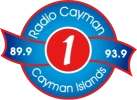More humane feral cat control procedures introduced in Little Cayman
Feral cats pose a serious and ongoing threat to Little Cayman’s unique and fragile ecosystem. Many animals native to the Sister Islands including the Red-footed Booby, the critically endangered Sister Islands rock iguana, and many other native birds, insects and reptiles, are particularly vulnerable to predation by feral cats.
Since control efforts resumed in 2022, several native species populations have experienced notable increases with the rock iguana population in particular, having tripled from around 1000 in 2022 to around 3500 in 2025.
While it is clear that controlling feral cat populations in Little Cayman is necessary to protect native wildlife, it is equally important that the methods used for removing them from the environment are humane, effective, and scientifically justified, and that there are procedures in place to identify pet cats so they may be returned to their owners.
To this end, 100% pet cat registration and microchipping was successfully achieved in Little Cayman to ensure that all pet cats trapped are easily identified and returned to their owners.
Under Section 6(2)(k) of the National Conservation Act, the NCC is mandated to approve humane procedures for controlling feral cats in environmentally sensitive areas, like Little Cayman. With an estimated 85% of feral cats removed from Little Cayman under previous procedures, the Department of Environment (DoE), in consultation with the National Conservation Council (NCC), and internationally recognized feral cat eradication experts, introduced control procedures to raise the ethical commitment to humane treatment by employing updated, science-based techniques that minimise animal suffering and stress.
Previously, the approved method involved overnight cage trapping, trap collection and transport in the morning, followed by veterinary euthanasia using physical restraint and injection. While this procedure is humane, it proves stressful for the animals, and logistically difficult and inefficient, particularly in remote areas of Little Cayman.
Under the new procedures, select DoE staff who have completed comprehensive training and certification for precision rifle euthanasia, use high-power air rifles (FX Dreamline models from Sweden) capable of delivering instantaneous, painless dispatch at close range. This method allows euthanasia to occur swiftly and discreetly on site—eliminating the need for transport and handling that can cause unnecessary distress to the animal.
These methods align with international best practices for wildlife management and have been endorsed by experienced partners from Australia and other jurisdictions where feral cat control and eradication have been essential to species recovery. The process is only carried out by licensed, trained personnel under NCC approval, ensuring both professionalism and accountability.
The shift to these new methods reflects the National Conservation Council and the Department of Environment’s commitment to balancing compassion for individual animals with the urgent need to protect the island’s native species and habitats. By adopting procedures that reduce stress, avoid prolonged captivity, and provide rapid, humane euthanasia, the community can be assured that a thoughtful, evidence-based approach to conservation is being practiced. Through these measures, Little Cayman continues to lead the region in responsible, ethical wildlife management that ensures a safer future for both its wildlife and its people.
Latest News
-
Man Arrested and Charged Following Robbery in George TownPolice/Cou...25 November 2025, 05:09 AM
-
Registration Opens for ReConnect 2026Business25 November 2025, 05:09 AM
-
ICCI Students Gain First-Hand Innovation Insight During Silicon Valley SeminarEducation25 November 2025, 05:08 AM
-
NiCE Programme Registration Extended Through 4pm on Tuesday, 25 NovemberGovernment...25 November 2025, 05:07 AM
-
Premier Leads Delegations to UK, India and FloridaPolitics &...25 November 2025, 05:05 AM


